NetSuite Enterprise Resource Planning (ERP) System
Join the more than customers NetSuite helps to streamline business processes, gain visibility and free up the time and resources needed to adapt to change, drive innovation and remain competitive.

Grow your business with an agile, AI-powered ERP system
NetSuite ERP is an all-in-one, AI-powered, cloud business management solution that helps organisations operate more effectively by automating core processes and providing real-time visibility into operational and financial performance. With a single, integrated suite of applications for managing accounting, order processing, inventory management, production, supply chain and warehouse operations, NetSuite ERP gives companies clear visibility into their data and tighter control over their businesses.
Access financial, operational and transactional data from across the organisation. Easily customise dashboards, reports and visual analytics to provide a summary-level overview or an in-depth account of business activity.
Manage accounting, inventory, operations, distribution and more from a single application. Automate manual processes to save time and free up resources to better serve customers, identify new opportunities and outpace the competition.

Effortlessly manage multiple subsidiaries, business units and legal entities with one ERP solution. Get real-time visibility at local, regional and headquarter levels, and standardise business processes across all divisions and subsidiaries. NetSuite ERP is used in more than 200 countries, supports over 27 languages and 190 currencies — and can handle your global business with ease.
We couldn’t have achieved such high levels of growth and efficiencies without the reporting and up-to-date, real-time data we now have available to us.

NetSuite ERP delivers wide-ranging benefits by automating business processes, improving operational awareness and giving organisations greater control over their resources.
Transform your general ledger, optimise AR, automate AP and streamline tax management. Get a complete view of cash flow and financial performance.
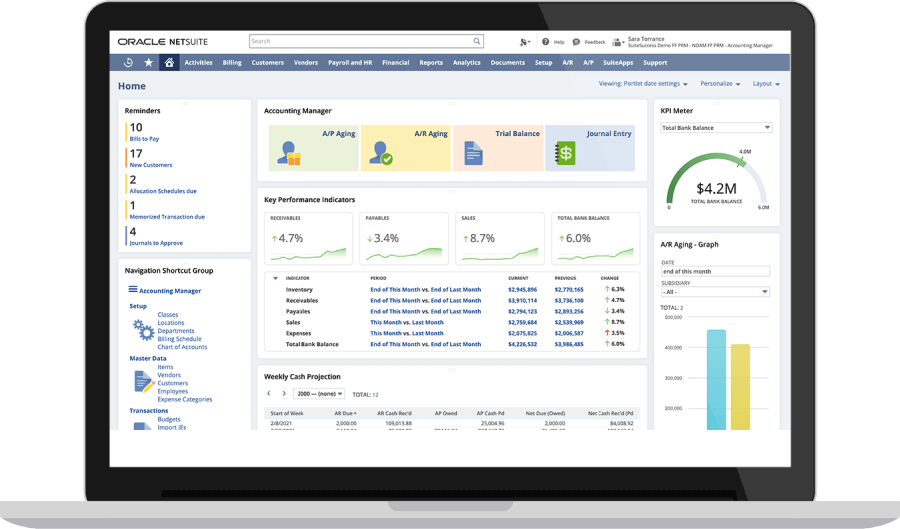
Expedite daily financial transactions, accelerate the financial close process and ensure compliance. Get a complete, real-time view of your business’s financial performance, from a consolidated level down to individual transactions.
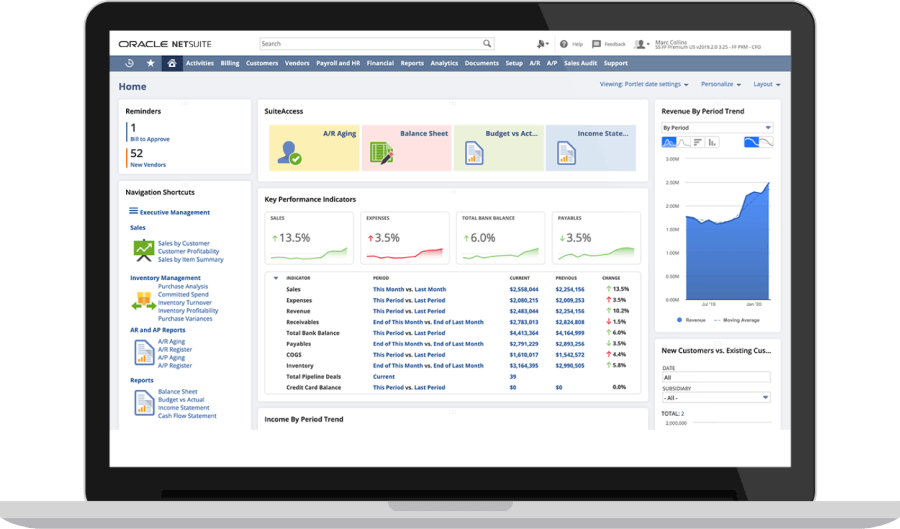
NetSuite OneWorld helps companies manage global operations, including multiple currencies, taxation rules and reporting requirements, across geographies and subsidiaries, all while providing real-time financial consolidation and visibility.
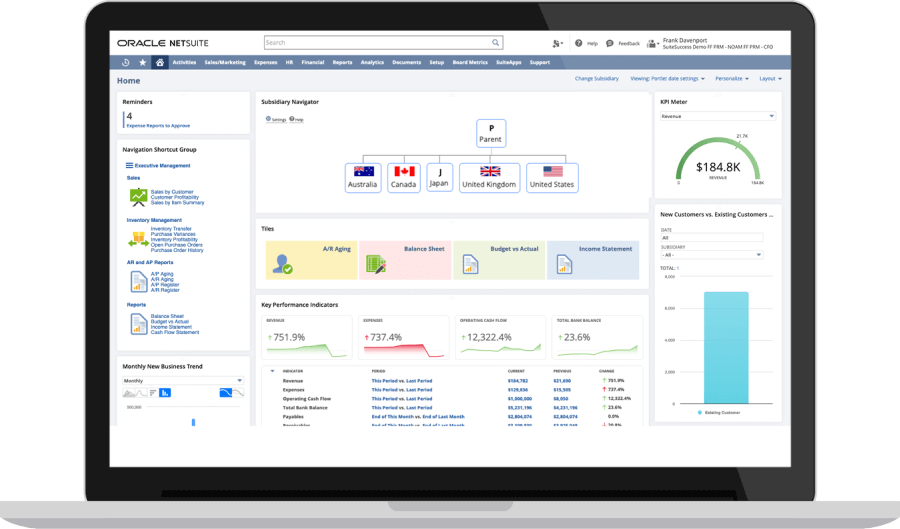
NetSuite Enterprise Performance Management brings together planning, budgeting, forecasting, account reconciliation, financial close, and reporting processes from across the entire organisation.
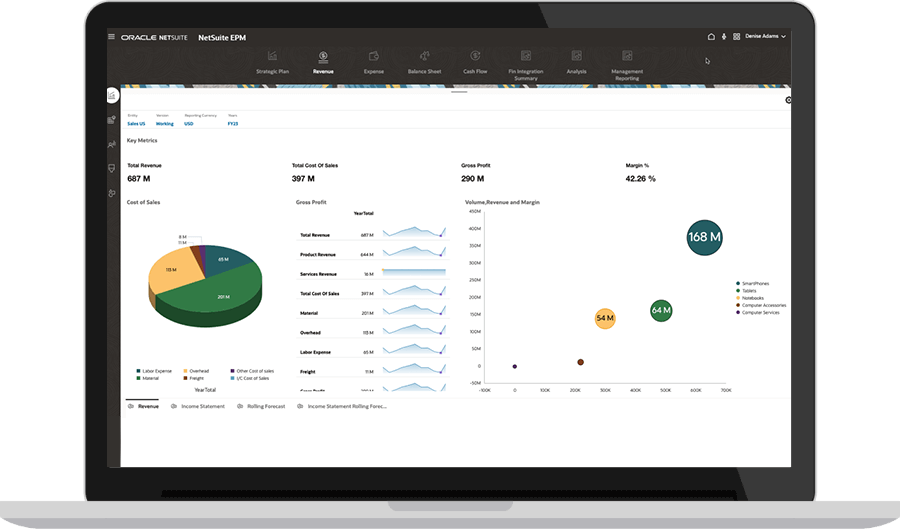
Automate the management of your inventory. Keep inventory costs low while meeting customer delivery expectations. NetSuite delivers tools for tracking inventory in multiple locations, determining reorder points, managing replenishment and optimising safety stock.
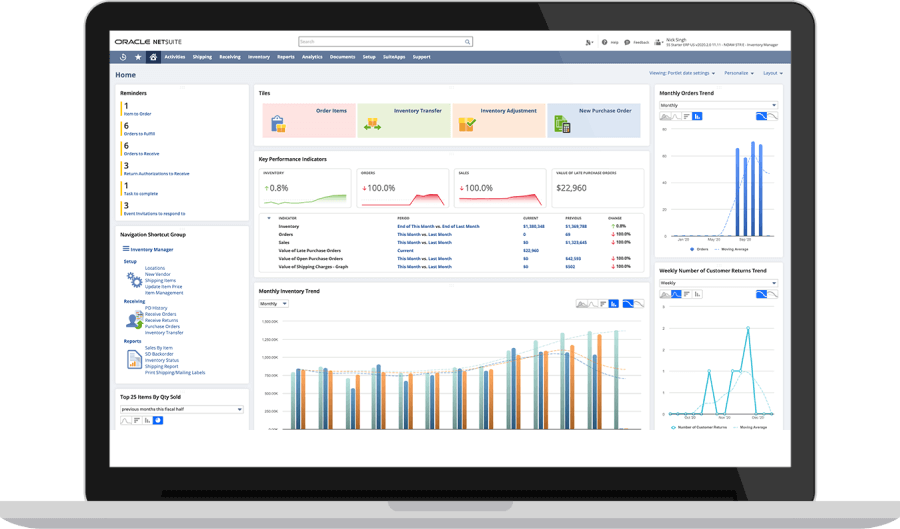
Streamline order processing by eliminating manual bottlenecks, preventing errors and establishing a smooth flow from sales quote to order fulfillment. The result: timely invoicing and payment.
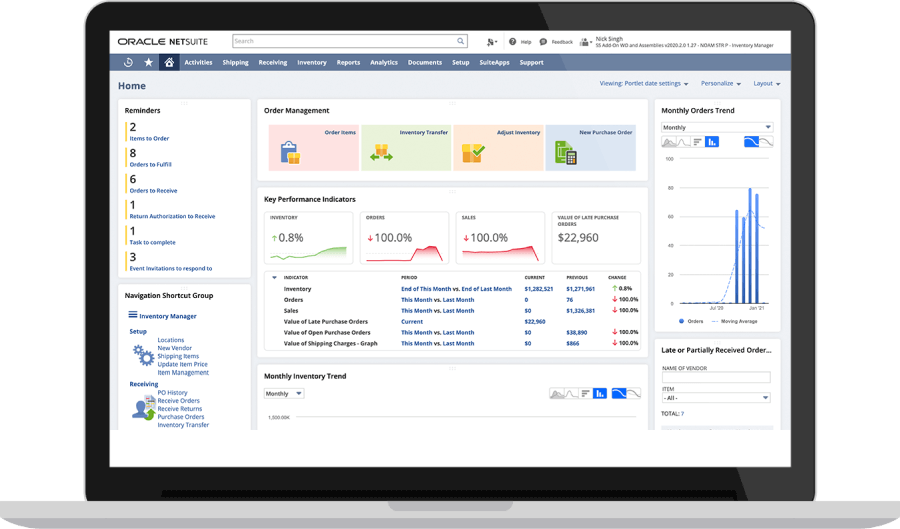
Where an item is produced or stored shouldn't keep a business from meeting customer needs. NetSuite eases the process of moving goods or materials through an extended supply chain.
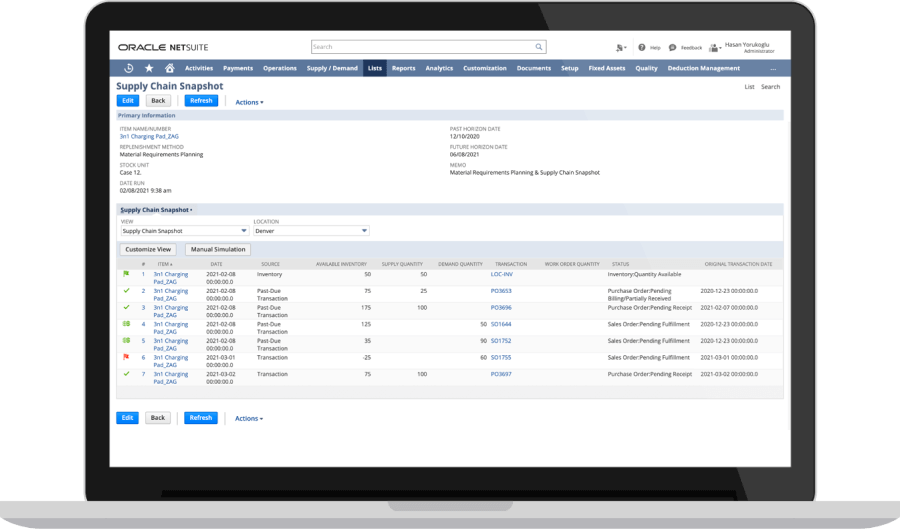
Optimise warehouse operations with RF-device-directed putaway and picking tasks, driven by customised, user-defined strategies and advanced capabilities like wave management, cartonisation, cycle count planning, real-time inventory updates and shipping system integrations.
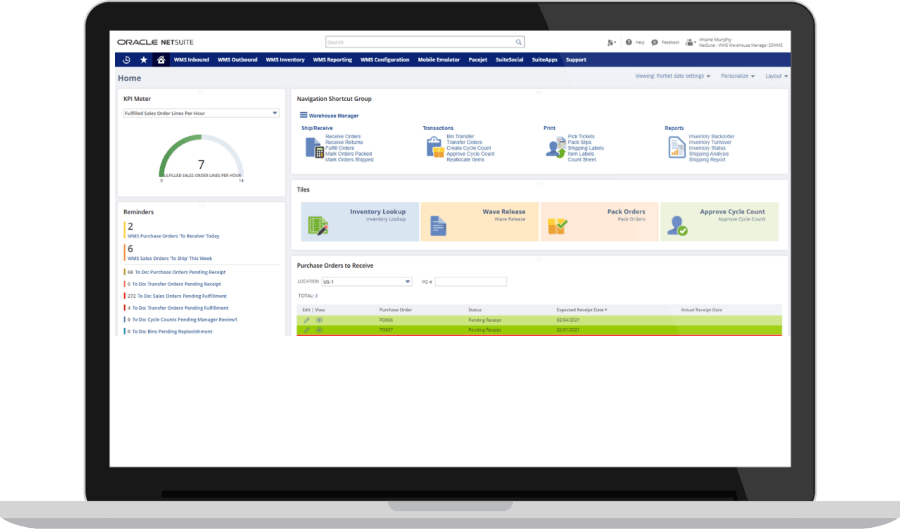
Buy goods and services at the best price and in a timely manner. Save time, reduce costs and improve visibility into spending and vendor performance by centrally managing procurement. Ensure clear communication throughout the procure-to-pay process.
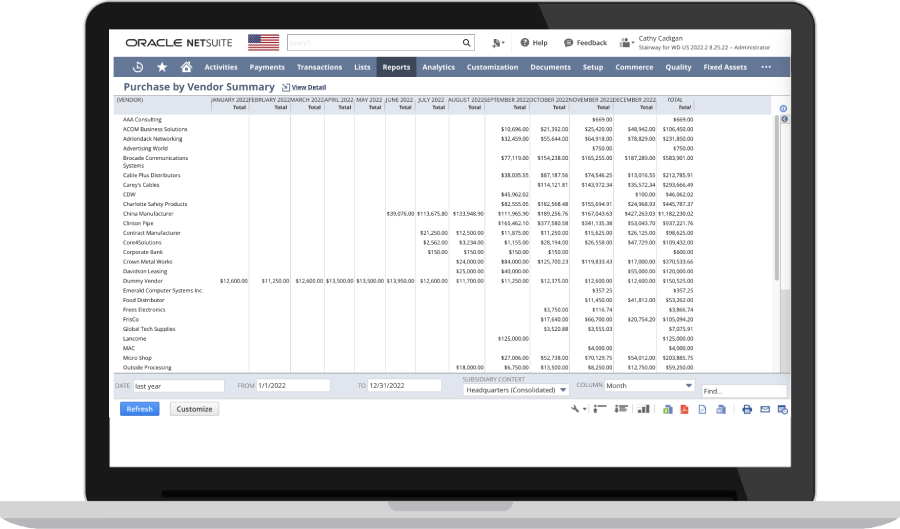
NetSuite has packaged the experience gained from tens of thousands of worldwide deployments over two decades into a set of leading practices that pave a clear path to success and are proven to deliver rapid business value. With NetSuite, you go live in a predictable timeframe — smart, stepped implementations begin with sales and span the entire customer lifecycle, so there’s continuity from sales to services to support.



Companies of every size, from pre-revenue startups to fast-growing businesses, have made the move to NetSuite. Looking for a better way to run your business but wondering about the cost?
Users subscribe to NetSuite for an annual license fee. Your license is made up of three main components: core platform, optional modules and the number of users. There is also a one-time implementation fee for initial setup. As your business grows, you can easily activate new modules and add users — that’s the beauty of cloud software.
Get started now with Industry Editions of NetSuite ERP that include accounting capabilities and modules to address industry-specific needs.


Access specifications, features and benefits of NetSuite ERP.

Spark ideas with success stories from NetSuite customers.

See NetSuite ERP in action.

Go deep into topics around NetSuite ERP.

Discover best practices and learn more about enterprise resource planning from beginner to advanced levels.